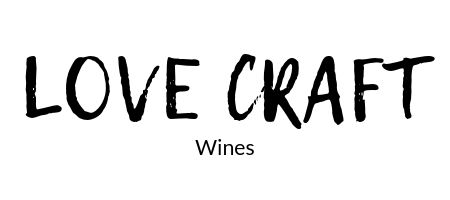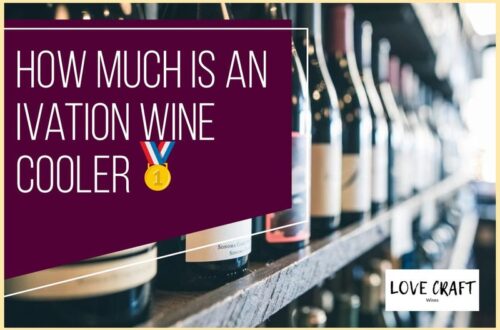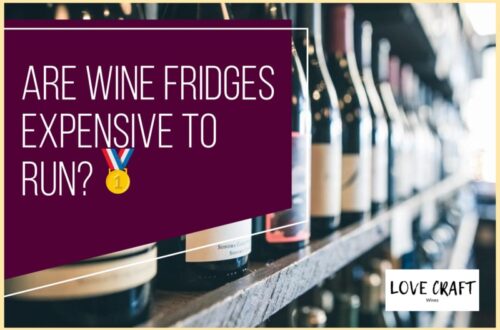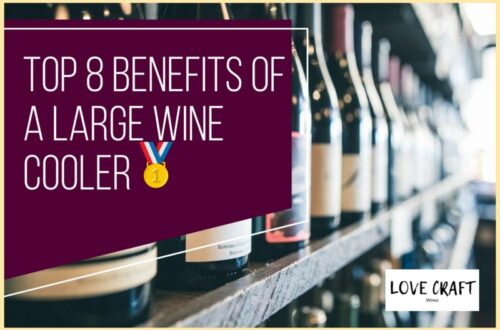Do you love indulging in a glass of wine and a cheese board at the end of a long day? Many people do, and for good reason. Wine and cheese are a match made in heaven, and their combination can elevate your taste buds to a whole new level.
But why exactly do wine and cheese go so well together? In this article, we will explore the reasons behind this perfect pairing and provide you with some tips to enhance your wine and cheese experience.
First and foremost, the flavors of wine and cheese complement each other perfectly. The acidity and tannins in wine cut through the rich and creamy texture of cheese, creating a harmonious balance of flavors. Additionally, the fruity and earthy notes in wine can enhance the flavors of different types of cheese, while the cheese can bring out the subtle undertones in the wine.
But it’s not just about the flavors – the textures of wine and cheese also play an important role in their pairing. So, let’s dive deeper into the science behind why wine and cheese are a match made in culinary heaven.
Table of Contents
Complementary Flavors
Combining different flavors can result in a harmonious balance, and the complementary flavors found in wine and cheese create a unique and satisfying culinary experience.
The flavor profiles of wine and cheese are complex, and when paired together, they enhance each other’s flavors. Wine has a variety of flavors, ranging from fruity and sweet to acidic and bitter. Cheese, on the other hand, has a wide range of flavors, from mild and creamy to salty and sharp.
When paired correctly, the flavors of wine and cheese can create a sensory experience that is unmatched. The flavors in wine and cheese complement each other in various ways. For example, red wine pairs well with strong, aged cheese because the tannins in the wine help cut through the richness of the cheese. On the other hand, white wine pairs well with milder cheeses such as brie and goat cheese because the acidity in the wine balances out the creaminess of the cheese.
The flavors of the wine and cheese work in harmony to create a unique and satisfying culinary experience. Next, let’s explore how wine and cheese pairings can also enhance textures.
Enhancing Textures
Enhancing textures is key to elevating the taste experience of both wine and cheese, making them even more enjoyable together. Analyzing acidity is a good starting point as it can influence the texture of both.
For example, a high-acidic wine can cut through the creaminess of a rich cheese, while a low-acidic wine can balance the saltiness of a sharp cheese. Similarly, experimenting with pairings can reveal the perfect combination of textures.
For instance, a full-bodied red wine can complement the dense texture of a hard cheese, while a light white wine can contrast the softness of a fresh cheese. But it’s not just about finding a match.
The way you eat wine and cheese also affects their textures. For instance, taking a sip of wine after a bite of cheese can smooth out the texture of both, while taking a bite of cheese after a sip of wine can intensify their flavors. Additionally, serving cheese at room temperature can enhance its natural texture and bring out its distinct flavors.
All these details add up to create a richer and more enjoyable experience that showcases the best of both wine and cheese. Moving on to the next section, the role of tannins is important to consider when pairing wine and cheese.
The Role of Tannins
Understanding the impact of tannins is crucial in creating a harmonious pairing experience that highlights the unique textures and flavors of each component.
Tannins are naturally occurring compounds that are found in both wine and cheese, and they play a key role in creating a successful pairing.
When it comes to wine, tannins come from the grape skins, seeds, and stems, and they are responsible for the astringent sensation that you feel in your mouth.
In cheese, tannins come from aging, and they contribute to the firmness, bitterness, and complexity of the cheese.
The benefits of tannins in wine and cheese pairing are numerous.
Tannins help to cut through the richness of cheese, creating balance and enhancing the overall flavor experience.
They also work to cleanse the palate, preparing it for the next bite or sip.
However, it’s important to note that not all wine and cheese combinations work well with tannins.
Pairing strategies take these factors into consideration, and they help to create pairings that complement each other perfectly.
Pairing Strategies
To create a successful pairing experience, you need to consider factors such as texture, flavor, and intensity, and use strategies that highlight the unique qualities of each component.
When it comes to pairing wine and cheese, there are a few key strategies to keep in mind. First, consider the flavor profiles of both the wine and the cheese. A general rule of thumb is to pair like with like – for example, a bold, full-bodied red wine will pair well with a strong, aged cheese. On the other hand, a light, crisp white wine will pair better with a softer, milder cheese.
Another important factor to consider is the intensity of both the wine and the cheese. You don’t want one component to overpower the other, so aim for balance. Additionally, think about the serving suggestions for each component.
For example, if you’re serving a red wine that benefits from a bit of aeration, consider decanting it before serving. Similarly, if you’re serving a cheese that is best enjoyed at room temperature, be sure to take it out of the fridge a little while before your guests arrive.
By keeping these strategies in mind, you’ll be sure to create a pairing that is both harmonious and delicious.
As you become more comfortable with pairing wine and cheese, don’t be afraid to explore different varieties. There are countless types of cheese and wine out there, so there’s no need to limit yourself to the same pairings every time. You might be surprised by how well an unexpected pairing can work, so don’t be afraid to experiment.
With a little bit of knowledge and a willingness to try new things, you’ll soon become a pro at pairing wine and cheese.
Exploring Different Varieties
Now it’s time for you to branch out and try new combinations of flavors and textures, adding some excitement and adventure to your taste buds’ journey.
When exploring different varieties of wine and cheese pairings, it’s important to consider the wine regions and cheese production methods. Wines from different regions have unique characteristics that can complement or contrast with certain types of cheeses.
For example, a full-bodied Cabernet Sauvignon from Napa Valley pairs well with a sharp cheddar cheese. The rich, bold flavors of the wine balance out the sharpness of the cheese, creating a harmonious taste experience.
Similarly, a crisp Sauvignon Blanc from New Zealand pairs well with a tangy goat cheese. The citrus notes in the wine enhance the tangy flavor of the cheese, creating a refreshing and zesty combination.
By exploring different varieties of wine and cheese, you can discover new flavor profiles and find your perfect match.
Frequently Asked Questions
What are some common mistakes people make when pairing wine and cheese?
When it comes to pairing wine and cheese, there are a few common mistakes that people tend to make. One of the biggest mistakes is not balancing the flavor profiles of the wine and cheese.
For example, pairing a bold, full-bodied red wine with a delicate, mild cheese can overpower the cheese and leave the wine tasting bitter. Another mistake is not taking into account the age of the cheese.
A young, fresh cheese may pair better with a crisp white wine, while an aged, sharp cheese may need a stronger red wine to complement its flavors. To avoid these common pairing mistakes, it’s important to consider the flavor profiles of both the wine and cheese and aim to balance them out for a delicious and harmonious pairing.
How does the age of the cheese affect the pairing with wine?
When it comes to pairing wine with cheese, the age of the cheese is an important factor to consider.
For example, blue cheese is known for its strong, pungent flavor that pairs well with a bold red wine. The tannins in the wine help to cut through the richness of the cheese and balance out the flavors.
On the other hand, an aged cheddar is best paired with a crisp white wine. The acidity in the wine helps to enhance the nutty, caramel notes in the cheese.
So, next time you’re selecting a wine to go with your cheese board, consider the age of the cheese and pair accordingly for the perfect match.
Can vegan cheese be paired with wine in the same way as regular cheese?
Imagine taking a bite of a warm, gooey chocolate chip cookie straight from the oven. Now, imagine pairing that cookie with a tall glass of cold milk. The way the two complement each other is like a dance between two partners.
But can vegan cheese alternatives match up to the same level of compatibility with wine varietals? The answer is yes, but with a few caveats. While vegan cheese can offer similar textures and flavors as regular cheese, the lack of animal fats and proteins can impact the pairing.
However, with the right wine varietals, such as a crisp Sauvignon Blanc or a bold Cabernet Sauvignon, vegan cheese can still be enjoyed in the same way as regular cheese when paired correctly.
Are there any particular regions or countries that produce wine and cheese that pair exceptionally well together?
When it comes to pairing wine and cheese, few regions can compete with the gastronomic prowess of France and Italy. French wine and cheese are often considered the ultimate pairing, with classics like Cabernet Sauvignon and Camembert or Sauvignon Blanc and Roquefort.
Italy, on the other hand, offers a diverse range of cheeses and wines that lend themselves to delicious combinations, such as Parmigiano-Reggiano and Chianti or Pecorino Romano and Barolo. The key to a successful pairing is to find a harmony in flavor profiles and textures, and both France and Italy excel in producing wines and cheeses that complement each other perfectly.
How should the serving temperature of both the wine and cheese be taken into consideration when pairing them?
When it comes to pairing wine and cheese, serving temperature is crucial to getting the perfect flavor profile. To achieve the best results, consider the temperature of both the wine and cheese.
For example, a rich and creamy brie pairs perfectly with a crisp white wine like Sauvignon Blanc. But, if the cheese is too cold, it’ll dull the flavors of the wine.
On the other hand, a bold red wine like Cabernet Sauvignon pairs well with aged cheddar, but if the cheese is too warm, it’ll overpower the wine.
So, pay close attention to the serving temperature of both the wine and cheese to create a harmonious and delicious pairing.
Conclusion
Now that you know why wine and cheese make such a perfect match, it’s time to put your knowledge into practice. Whether you’re hosting a dinner party or just enjoying a cozy night in, pairing wine and cheese is a great way to elevate your culinary experience.
Remember to look for complementary flavors and textures, pay attention to the role of tannins, and experiment with different varieties to find your perfect pairing.
Just like a puzzle where each piece fits perfectly into the next, wine and cheese come together to create a harmonious and delicious experience. So, grab a bottle of your favorite wine, a selection of cheeses, and get ready to indulge in one of life’s simple pleasures.
As the French say, ‘Wine and cheese are like a marriage, you cannot have one without the other.’ So, why not enjoy this perfect pairing like a match made in heaven?





